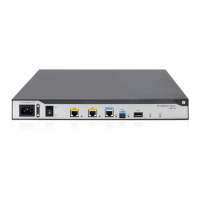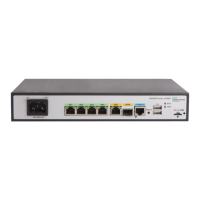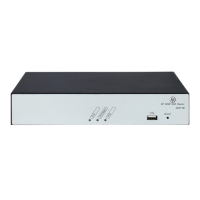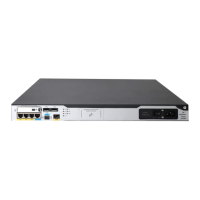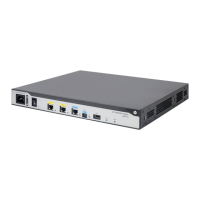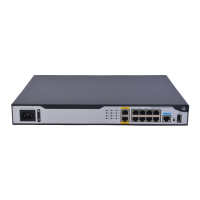8
Ste
Command Remarks
1. Enter system view.
system-view N/A
2. Enter interface view.
interface interface-type
interface-number
N/A
3. Configure the authenticator to
authenticate the peer by using
CHAP.
ppp authentication-mode chap
[ [ call-in ] domain isp-name ]
By default, PPP
authentication is disabled.
4. Configure local or remote AAA
authentication.
For local AAA authentication, the
username and password of the
peer must be configured on the
authenticator.
For remote AAA authentication,
the username and password of the
peer must be configured on the
remote AAA server.
For more information about AAA
authentication, see Security
Configuration Guide.
The username configured
for the peer must be the
same as that configured on
the peer.
The passwords configured
for the authenticator and
peer must be the same.
To configure the peer:
Ste
Command
Remarks
1. Enter system view.
system-view N/A
2. Enter interface view.
interface interface-type
interface-number
N/A
3. Configure a username for
the CHAP peer.
ppp chap user username
The default setting is null.
The username you configure on
the peer must be the same as the
local username you configure for
the peer on the authenticator.
4. Set the CHAP
authentication password.
ppp chap password { cipher |
simple } password
The default setting is null.
The password you set on the
peer must be the same as the
password you set for the peer on
the authenticator.
Configuring MS-CHAP or MS-CHAP-V2 authentication
When you configure MS-CHAP or MS-CHAP-V2 authentication, follow these guidelines:
• The device can only act as an authenticator for MS-CHAP or MS-CHAP-V2 authentication.
• L2TP supports only MS-CHAP authentication.
• MS-CHAP-V2 authentication supports password change only when using RADIUS.
To configure MS-CHAP or MS-CHAP-V2 authentication when the authenticator name is configured:
Ste
Command Remarks
1. Enter system view.
system-view N/A
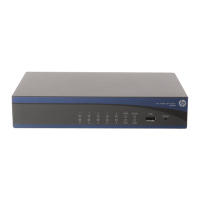
